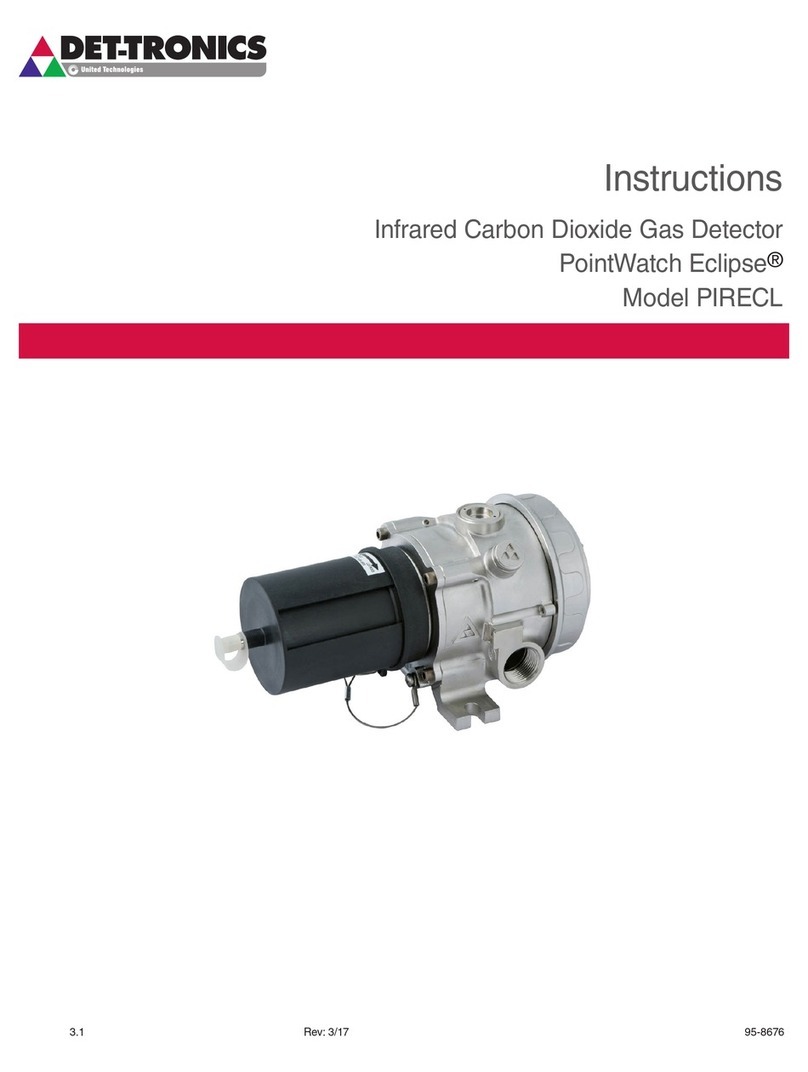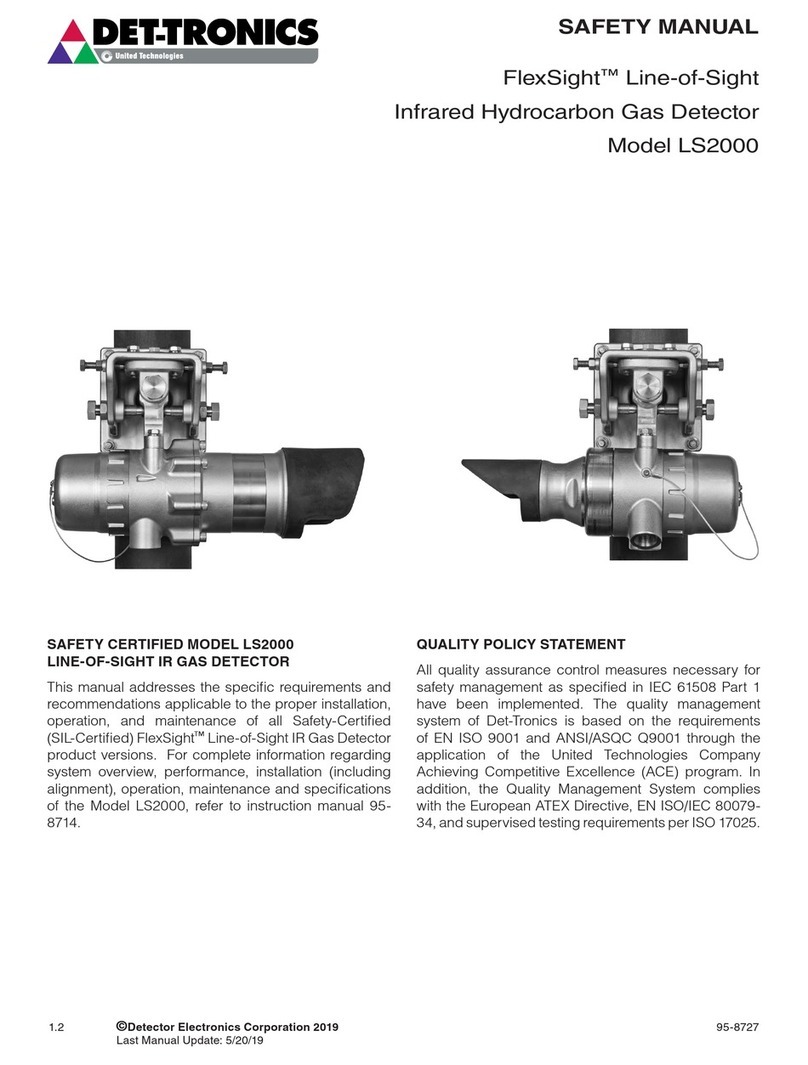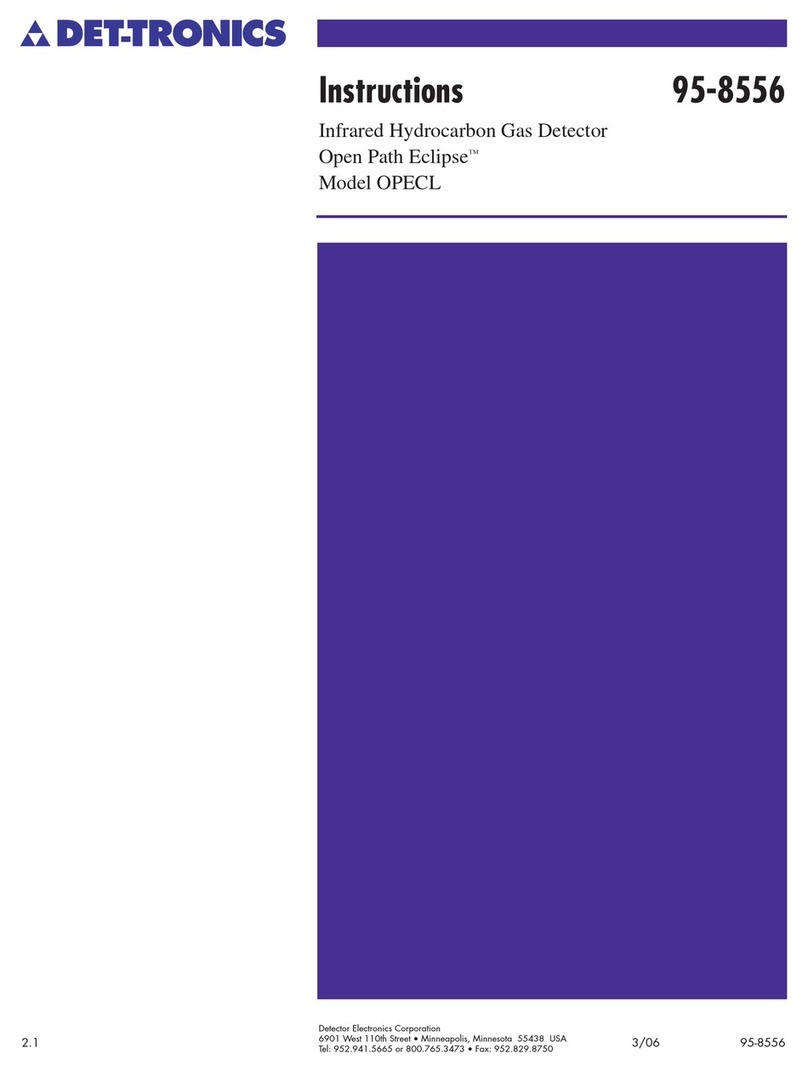
2
12.4 95-8616
Automatic Sensor Module Recognition
The transmitter provides automatic gas sensor
recognition, allowing the operator to access the
following information via HART, or a UD10 or UD20
Universal display:
• Sensor module serial number
• Gas type
• Measurement range
The sensor module is factory programmed for the gas
type and measurement range. When the sensor module
powers up, the transmitter reads and acknowledges
the gas type and measurement range.
NOTE
The UD30 does not provide automatic sensor
module recognition. The UD30 Setup Wizard
must be used to congure the GTS sensor.
GTX TRANSMITTER
The transmitter output is a linear 4-20 mA dc signal
with HART communication that directly corresponds to
0-100% full scale.
A 3.8 mA output indicates sensor calibration in progress
(17.3 mA for O2sensor). The GT3000 comes with one
of two pre-programmed fault output levels: 2.45 mA or
3.5 mA.
Priority of output signals from highest to lowest is:
1Calibration
(In progress)
2Fault
3Gas Level
Transmitter Wiring
The GTX transmitter is a two-wire loop powered device
that uses a three-wire cable (power, signal, and earth
ground) for connecting to a controller or monitoring
device. The use of shielded cable is required.
REAL TIME CLOCK (RTC)
The GTX transmitter has a real time clock with battery
back-up, that is used for time stamping the event logs.
The time and date are set and read using a UD10/UD20
Universal Display Unit, a HART communication device,
or AMS software. The time stamp on the logs will not be
correct if the RTC in the transmitter is not set correctly.
NOTE
The UD30 does not read/set the GTX Real Time
Clock.
HISTORY/EVENT LOGS
Both the transmitter and sensor are able to store 256
history logs, which are saved in non-volatile memory
and retained through power cycles. A UD10/UD20
Universal Display Unit, a HART communication device,
or AMS software is required to view the history logs.
NOTE
The UD30 does not read the GT3000 logs.
Sensor Logging Capability
The sensor module logs the following operating
parameters in non-volatile memory:
• Running Hours - The sensor module maintains the
total operating hours, and cannot be reset.
• Min/Max Temperature -
The sensor module
maintains the minimum and maximum temperatures
with a date and time stamp.
• Calibration - The sensor module logs the calibration
history with a date and time stamp, along with the
success or cause of failure codes. See Table 1. The
zero and span values (AD converter values recorded at
the time of calibration) are also saved. This allows the
logs to follow the sensor module when it is calibrated
separately from the transmitter. (Calibration data is
available via a UD10/UD20, a HART communication
device, or AMS software.)
NOTE
GT3000 Calibration data cannot be read via a
UD30.
The sensor module gets the current time and date
from the transmitter and provides calibration log
information to the transmitter. See Figure 1.
Number Denition
0EMPTY LOG
1 NOT USED
2 NOT USED
3ZERO CAL
4SPAN CAL
5ABORT CAL
6 FAILED CAL
7 NOT USED
8 NOT USED
9 INIT CAL LOG
10 NOT USED
11 CLR CAL FAULTS
Table 1—Calibration Status Codes
































